
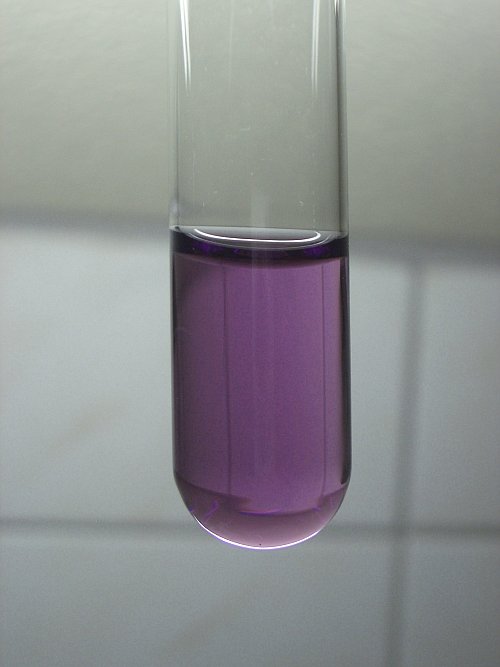

Aqueous solutions and precipitates of titanium
In aqueous solutions, titanium can exist in the +3 and +4 oxidation states. The +2 oxidation state also exists, but that is so strongly reducing, that this cannot exist in water. Water is reduced at once by titanium (II), forming hydrogen gas and an alkaline titanium (III) species. In this document, only the +3 and +4 oxidation states are covered. Solutions of the different species are shown and where appropriate, precipitates are shown.
![]()
Oxidation state +3
In acidic media, this oxidation state is quite stable. Even in contact with air, the trivalent titanium ions are only oxidized slowly. It takes many days before all titanium (III) is converted to titanium (IV) under acidic aerial conditions. In alkaline environments, the situation is totally different. The precipitate of titanium (III) hydroxide is so strongly reducing, that even water is attacked by this. Hydrogen gas is produced and the titanium (III) hydroxide is converted to hydrous titanium (IV) oxide. Below, pictures are given of a solution of titanium (III) ions in dilute HCl and the precipitate of titanium (III) hydroxide is shown, immediately after adding an excess amount of a solution of sodium hydroxide. The right picture clearly shows the bubbles of hydrogen gas after adding the sodium hydroxide. The liquid starts foaming and the precipitate goes upwards, due to the large amount of gas, trapped in the precipitate. The precipitate of titanium hydroxide is very dark blue, almost black.

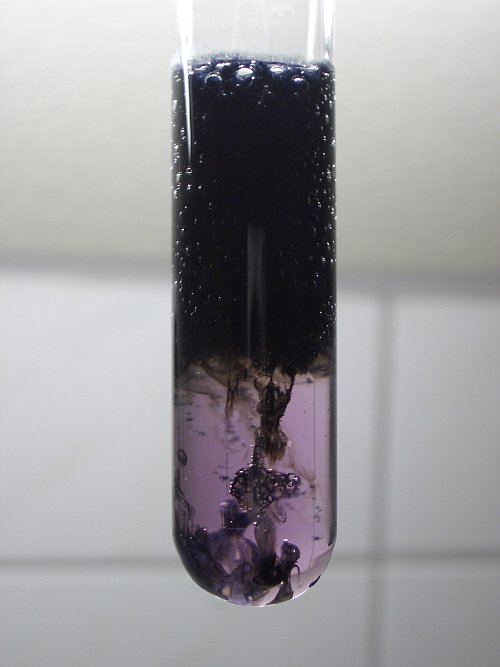
When the test tube is allowed to remain in contact with air, then the precipitate turns lighter as is shown by the left picture below. This is due to oxidation to white hydrous TiO2. When the test tube is shaken, then the blue color of the titanium (III) hydroxide can be seen better. Still, the bubbles of hydrogen gas can be seen clearly. The color also is somewhat lighter, due to the presence of some white TiO2·nH2O. This lighter color makes is easier to see that titanium (III) hydroxide is not purely black but very dark blue. Finally, when the dark blue precipitate is shaken for a long time, while allowing fresh air to enter the test tube frequently, it turns white, the smaller particles being converted first and the larger particles being converted to white particles only very slowly (takes tens of minutes, before they have been converted completely).
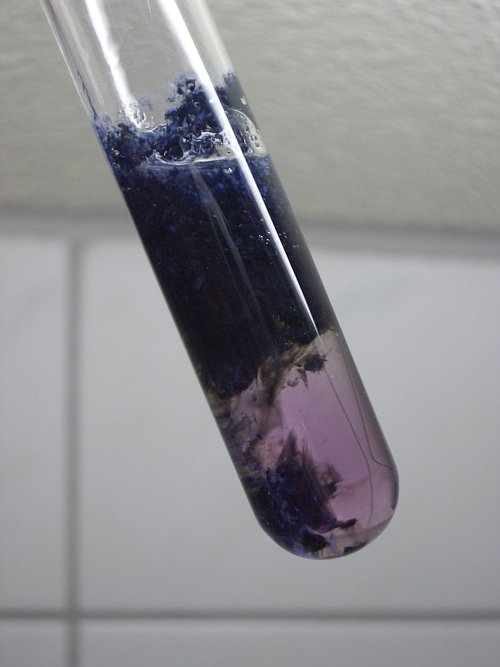
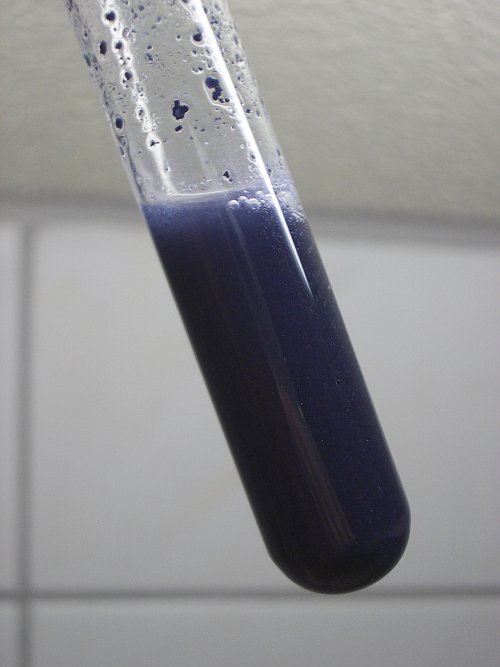
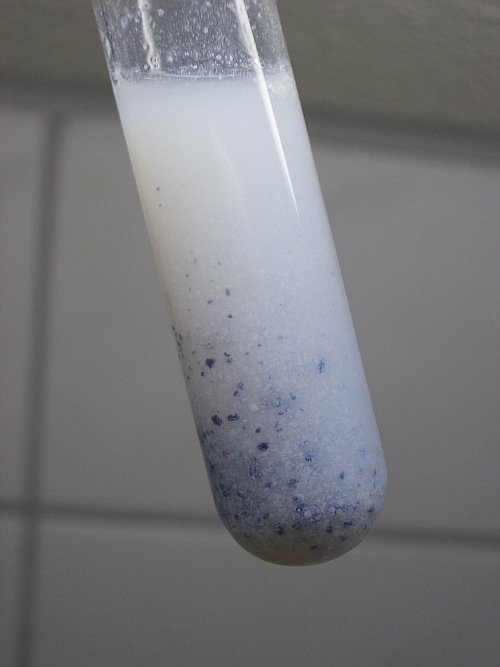
![]()
Oxidation state +4
This is the most stable oxidation state for titanium. Aqueous chemistry of titanium (IV) is confined to strongly acidic liquids. The titanium (IV) cation, Ti4+(aq), cannot exist in water, but at very low pH, the colorless so-called titanyl ion, often written as TiO2+(aq) exists. The actual ion, present in strongly acidic solutions, however probably is not TiO2+(aq), but TiO(OH)+(aq) or Ti(OH)22+(aq). When an acidic solution of a colorless titanyl compound is diluted, then a white precipitate is formed of hydrous titanium dioxide, TiO2·nH2O. The titanyl ion is very prone to hydrolysis at somewhat higher pH, even if this still is on the acidic side.
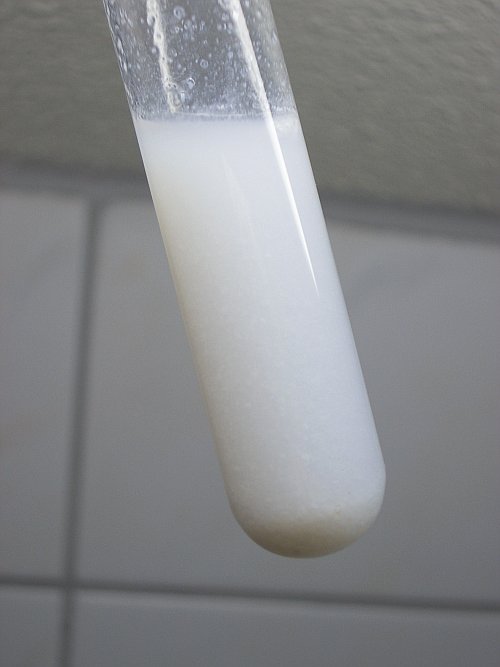
A remarkable property of titanium in the +4 oxidation state at low pH is the very high stability of an intensely red peroxo complex, which on extreme dilution still looks yellow. This peroxo complex is really stable. A solution of this can be stored for months without noticeable change or decomposition. A picture of this red complex is shown here. The sample shown here was prepared four months, before this picture was made. The extreme stability of this peroxo-complex is in sharp contrast with the fleeting existence of chromium-peroxo complexes of chromium in its +6 oxidation state.
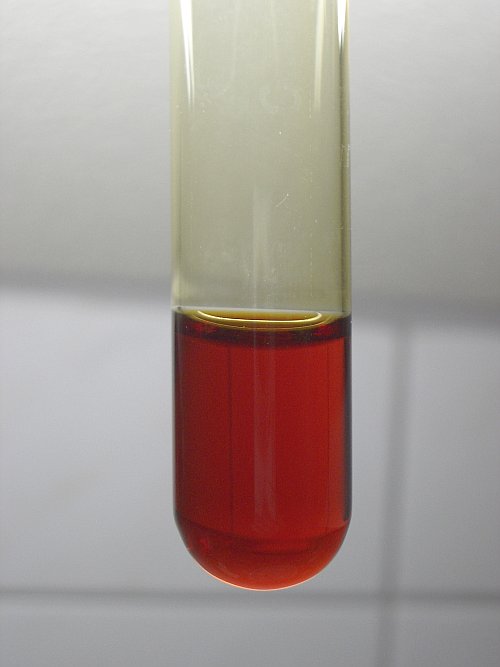
The peroxo complex can easily be made from a solution of a titanium salt, simply by adding hydrogen peroxide to the solution. The reaction is instantaneous. A nice effect is obtained if a few drops of 20% hydrogen peroxide are added to a purple solution of titanium (III) in dilute hydrochloride acid. The purple titanium (III) first is oxidized to colorless titanium (IV) and when excess hydrogen peroxide is present, then the orange complex is formed. The picture below shows this effect. Between the purple layer with titanium (III) and the orange layer with the peroxo complex there is a colorless layer, which slowly diffuses downwards.
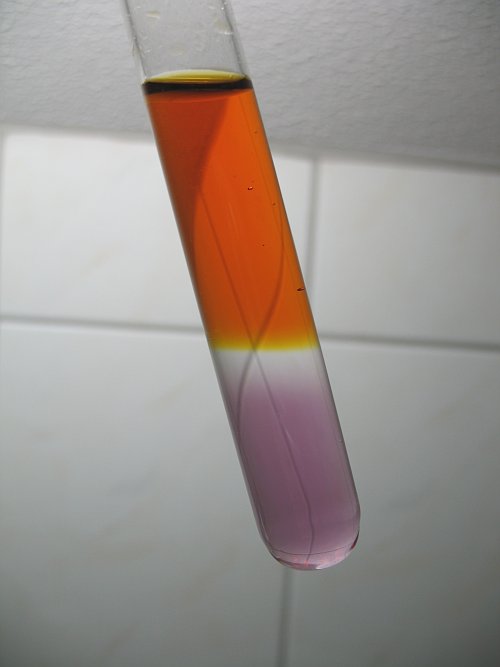
back to solutions/precipitates main page
back to miscellaneous main page